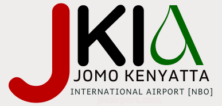Visitors intending to reach the official website should visit kaa.go.ke
Navigating an international airport can be daunting, especially for new fliers. This comprehensive guide will help you understand and navigate Jomo Kenyatta International Airport (JKIA) in Nairobi, Kenya, with ease. JKIA is the busiest airport in East Africa, serving as a major hub for both international and domestic flights.
Overview of JKIA Terminals
JKIA has several terminals, each designated for specific types of flights and airlines. Understanding the layout and services of each terminal will enhance your travel experience.
Terminal 1A (T1A)
- Usage: International departures
- Primary Airlines: Kenya Airways, SkyTeam partners
- Key Facilities:
- Check-in counters
- Duty-free shops
- Restaurants and cafes
- VIP lounges
- Currency exchange
- Security and passport control
Terminal 1A is dedicated to international arrivals and departures. Airlines operating from this terminal include:
- Kenya Airways
- KLM
- Air France
- Swiss Air
- Egypt Air
- RwandAir
- Qatar Airways
- Turkish Airlines
- Emirates
- Lufthansa
- British Airways
- China Southern Airlines
- Ethiopian Airlines
- Brussels Airlines
Terminal 1B (T1B)
- Usage: International departures
- Primary Airlines: Various international airlines
- Key Facilities:
- Check-in counters
- Retail outlets
- Dining options
- Lounges
- Passport control and security checks
Terminal 1B handles international departures exclusively. Airlines operating from this terminal include:
- Emirates
- Lufthansa
- Swiss Air
- Turkish Airlines
- KLM
- Air France
- Qatar Airways
- British Airways
- South African Airways
Terminal 1C (T1C)
- Usage: International departures
- Primary Airlines: Mix of international carriers
- Key Facilities:
- Check-in services
- Shopping and dining
- Lounges
- Security and passport control
Terminal 1C also focuses on international departures. Airlines operating from this terminal include:
- Etihad Airways
- Egypt Air
- RwandAir
- Saudia
- Oman Air
- China Southern Airlines
- Kenya Airways
Terminal 1D (T1D)
- Usage: Domestic departures and arrivals
- Primary Airlines: Kenya Airways, Jambojet
- Key Facilities:
- Check-in desks
- Retail stores
- Food and beverage outlets
- Lounges
- Security checks
Terminal 1D is used for domestic arrivals and departures, mainly catering to:
- Kenya Airways
- Jambojet
Terminal 1E (T1E)
- Usage: International arrivals
- Primary Airlines: All international airlines
- Key Facilities:
- Baggage claim
- Customs and immigration
- Duty-free shopping
- Transportation services
Terminal 2 (T2)
- Usage: Low-cost carriers, regional, and some international flights
- Primary Airlines: Jambojet, Fly540, Fastjet, other regional airlines
- Key Facilities:
- Check-in counters
- Shops and eateries
- Security screening
- Passenger waiting areas
- Ground transportation access
Terminal 2 is utilized by low-cost carriers and regional airlines. Airlines operating from this terminal include:
- Fly540
- Safarilink
- Bluebird Aviation
- Silverstone Air
- Skyward Express
Interterminal Transfers:
Navigating between terminals at Jomo Kenyatta International Airport (JKIA) can be efficiently done through several options.
It’s important to note that JKIA terminals are not connected by any rail network, and there is no shuttle bus for passengers to travel from one terminal to another on the landside. However, transfer in the airside is possible with a shuttle bus operated by Kenya Airports Authority, which manages JKIA. For landside transfers, walking is the primary mode of transport.
1. Inter-Terminal Shuttle Bus (Airside)
Service Overview: JKIA provides an airside shuttle bus service operated by the Kenya Airports Authority. This service is essential for passengers transferring between terminals without exiting the secure area of the airport.
Frequency and Route:
- The shuttle bus operates regularly and facilitates transfers between terminals on the airside, ensuring passengers can conveniently reach their respective departure or arrival gates without hassle.
2. Walking (Landside)
Connected Terminals: Terminals 1A, 1B, 1C, and 1E are close enough to allow passengers to walk between them easily. Terminal 2 is also accessible by foot but requires a longer walk.
Estimated Walking Times: Walking between the terminals is straightforward and generally takes less than 10 minutes. Below is a table showing the approximate walking distances:
| From Terminal | To Terminal | Estimated Walking Time |
|---|---|---|
| Terminal 1A | Terminal 1B | 5 minutes |
| Terminal 1B | Terminal 1C | 5 minutes |
| Terminal 1C | Terminal 1E | 5 minutes |
| Terminal 1E | Terminal 2 | 10 minutes |
Efficiency: Walking is a quick and efficient way to transfer between these terminals, especially for passengers with light luggage. The walking routes are well-signposted and secure, ensuring a smooth transfer.
